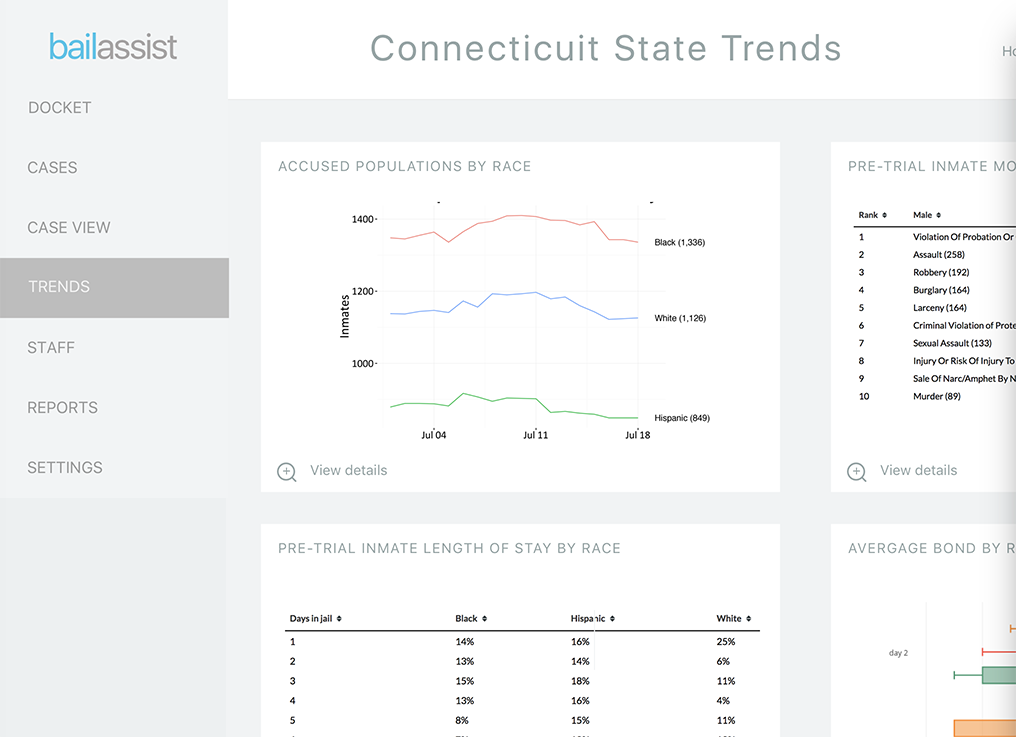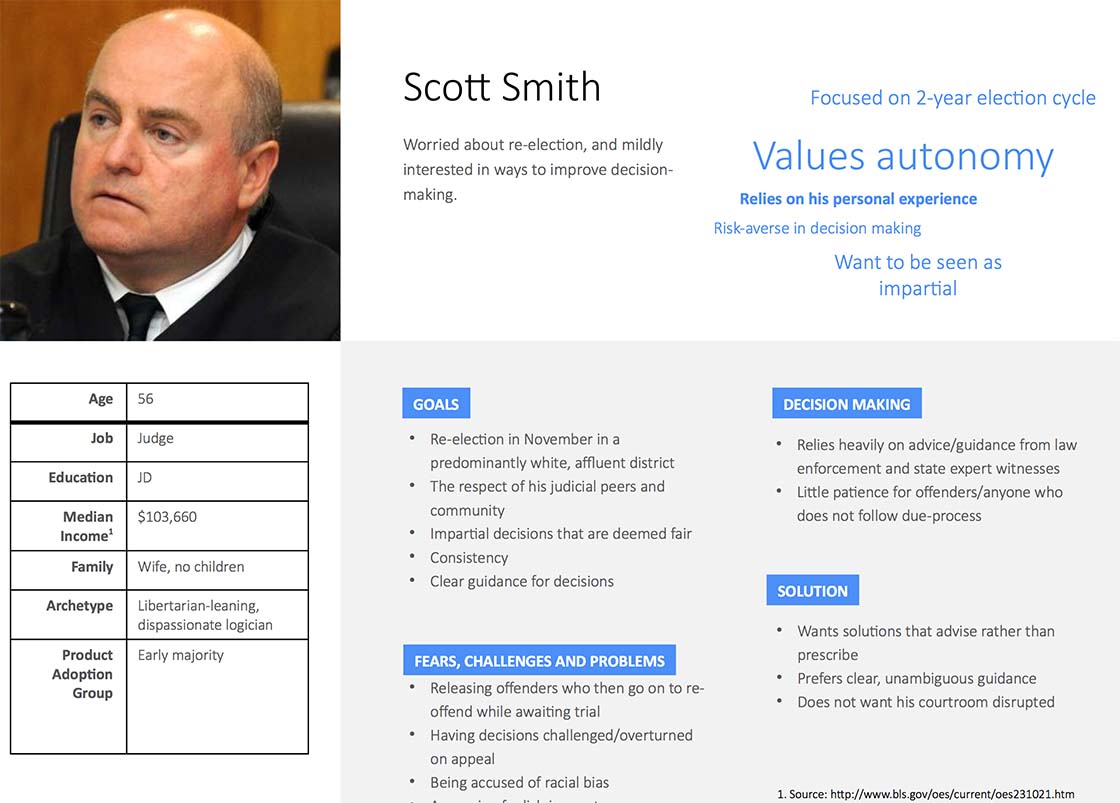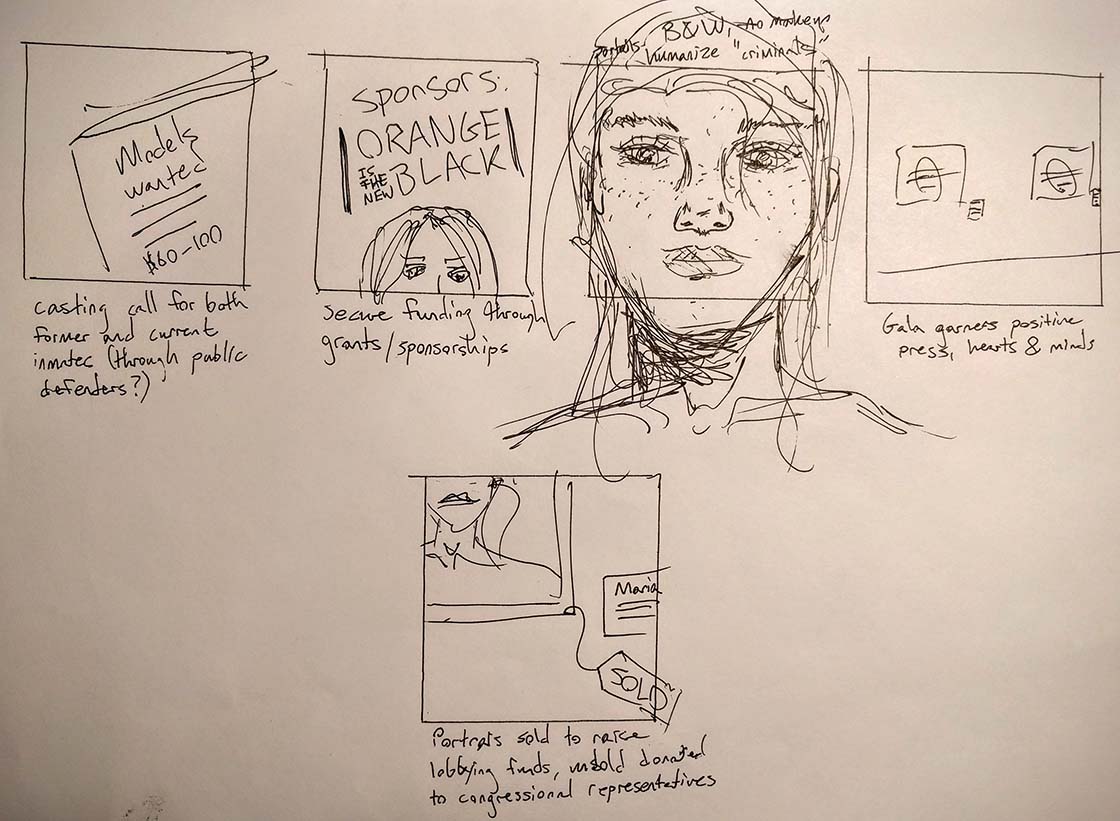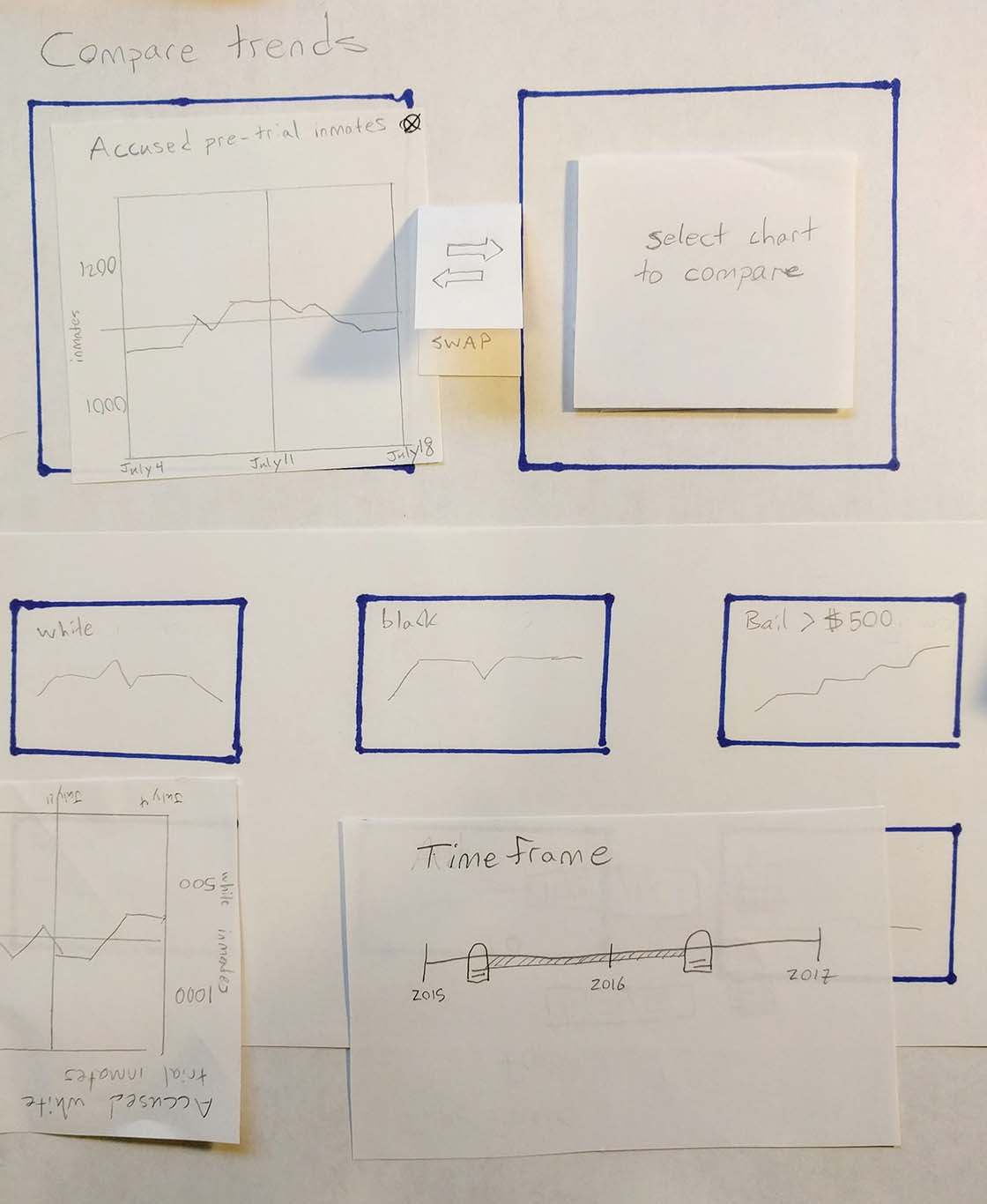BailAssist Prototype
I developed BailAssist as part of my involvement with the broader White House Police Data Initiative. BailAssist is a prototype operational dashboard to be used by county and state judges during court bail hearings.
Problem
The United States is a large country. But its prison population dwarfs its geography. While the US accounts for just 5% of the global population, it houses 22% of the world’s prisoners, making the United States the world’s single largest jailer.
The goal of BailAssist is to simplify, summarize, and aggregate the information judges need in order to make informed decisions on setting bail, while also nudging judges towards the desired outcome of fewer pre-trial inmates.
Interviews & Personas
One of the most important parts of my process was a willingness to admit I was wrong. For instance, while initially sketching out the dashboard modules, I included a social graph to show how connected defendants were to their community. I’d thought this was an important variable because I’d learned through interviews that it was a bail criteria often used by judges.
But after additional research I realized that many of my initial design decisions had been based on what was possible or common to show. What I needed to do was reframe the question and concentrate only on was what was necessary to show, in order to combat implicit bias.
Research
A June 26, 2015, New York Times article states that, “after crunching data on one and a half million criminal cases, researchers found that fewer than 10 objective factors — basically age, the criminal record and previous failures to appear in court, with more recent offenses given greater weight — were the best predictors of a defendant’s behavior. Factoring in other considerations did not improve accuracy.”
Armed with this knowledge, I began pairing down my design. I eliminated the visibility of factors that could contribute to bias in the case view, such as detailed demographic information, and spurious variables like community ties that could distract judges.
Prototyping
After exploring various solutions through brainstorming and paper prototypes, I used Sketch and InVision to rapidly iterate my final build. Because of the relatively low-cost of producing a prototype of a dashboard, I chose to go with a mid-fidelity version for this iteration.
Results
By increasing empathy in judges with the impact calculator, by decreasing bias by only showing relevant defendant information, by promoting proper use of assessment scores, and by reframing their measurements in positive terms, judges can be encouraged to become active and willing participants in the reduction of mass incarceration in the United States.



